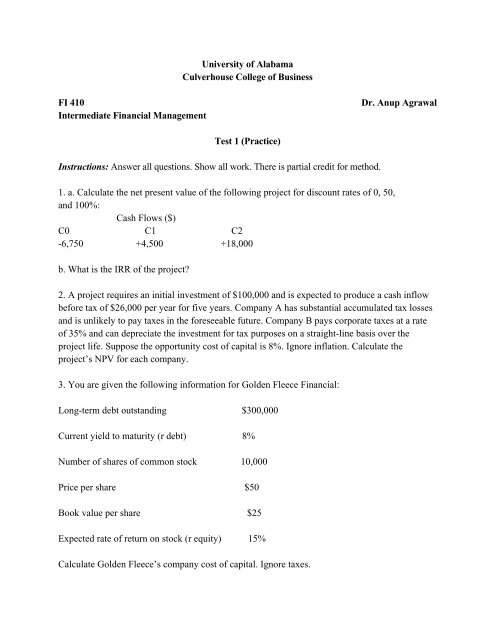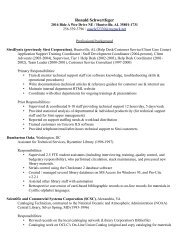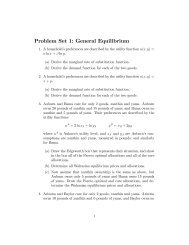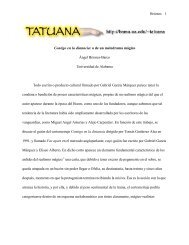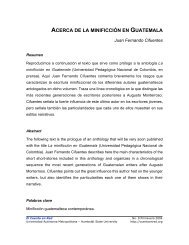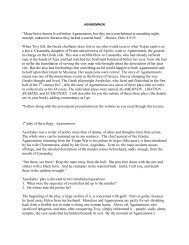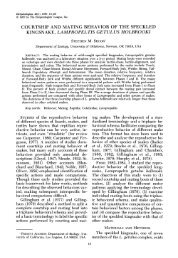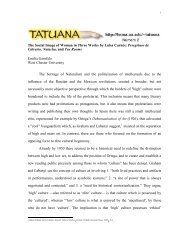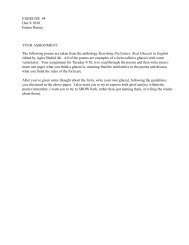Practice - Bama.Ua.Edu
Practice - Bama.Ua.Edu
Practice - Bama.Ua.Edu
Create successful ePaper yourself
Turn your PDF publications into a flip-book with our unique Google optimized e-Paper software.
University of Alabama<br />
Culverhouse College of Business<br />
FI 410 Dr. Anup Agrawal<br />
Intermediate Financial Management<br />
Test 1 (<strong>Practice</strong>)<br />
Instructions: Answer all questions. Show all work. There is partial credit for method.<br />
1. a. Calculate the net present value of the following project for discount rates of 0, 50,<br />
and 100%:<br />
Cash Flows ($)<br />
C0 C1 C2<br />
-6,750 +4,500 +18,000<br />
b. What is the IRR of the project?<br />
2. A project requires an initial investment of $100,000 and is expected to produce a cash inflow<br />
before tax of $26,000 per year for five years. Company A has substantial accumulated tax losses<br />
and is unlikely to pay taxes in the foreseeable future. Company B pays corporate taxes at a rate<br />
of 35% and can depreciate the investment for tax purposes on a straight-line basis over the<br />
project life. Suppose the opportunity cost of capital is 8%. Ignore inflation. Calculate the<br />
project’s NPV for each company.<br />
3. You are given the following information for Golden Fleece Financial:<br />
Long-term debt outstanding $300,000<br />
Current yield to maturity (r debt) 8%<br />
Number of shares of common stock 10,000<br />
Price per share $50<br />
Book value per share $25<br />
Expected rate of return on stock (r equity) 15%<br />
Calculate Golden Fleece’s company cost of capital. Ignore taxes.
4. Consider two mutually exclusive projects, both requiring an initial investment of $9,000 and a<br />
cost of capital of 10%. Project A generates cash inflows of $6,000, $5,000 and $4,000 in years 1,<br />
2 and 3, respectively. Project B generates an annual perpetuity of $1,800 starting in year 1 (i.e.,<br />
$1,800 per year forever). Suppose the forecasted cash flows for projects of this type are<br />
overstated by 8% on average (i.e., the forecast for each cash flow from each project should be<br />
reduced by 8%). But a lazy financial manager, unwilling to take the time to argue with the<br />
projects’ sponsors, instructs them to use a discount rate of 18%.<br />
a. What are the projects’ true NPVs?<br />
b. What are the NPVs at the 18% discount rate?<br />
c. Does the short-cut method of using an 18% discount rate lead to a wrong decision? Explain<br />
briefly.<br />
5. The authorized share capital of the Alfred Cake Company is 100,000 shares. The equity is<br />
currently shown in the company’s books as follows:<br />
Common stock ($.50 par value) $40,000<br />
Additional paid-in capital 10,000<br />
Retained earnings 30,000<br />
Common equity 80,000<br />
Treasury stock (2,000 shares) 5,000<br />
Net common equity $75,000<br />
a. How many shares are issued?<br />
b. How many are outstanding?<br />
c. Explain the difference between your answers to (a) and (b).<br />
d. How many more shares can be issued without the approval of shareholders?<br />
e. Suppose that Alfred Cake issues 10,000 shares at $2 a share. Which of the above figures<br />
would be changed?<br />
f. Suppose instead that the company bought back 5,000 shares at $5 a share. Which of the above<br />
figures would be changed?
6. You need to choose between making a public offering and arranging a private placement. In<br />
each case the issue involves $10 million face value of 10-year debt. You have the following data<br />
for each:<br />
• A public issue: The interest rate on the debt would be 8.5%, and the debt would be issued<br />
at face value. The underwriting spread would be 1.5%, and other expenses would be $80,000.<br />
• A private placement: The interest rate on the private placement would be 9%, but the total<br />
issuing expenses would be only $30,000.<br />
a. What is the difference in the proceeds to the company net of expenses?<br />
b. Other things being equal, which is the better deal?<br />
c. What other factors beyond the interest rate and issue costs would you wish to consider before<br />
deciding between the two offers?
FORMULAE<br />
1. a. NPV = Co + C1/(1+k) + C2/(1+k) 2<br />
+ … + CT/(1+k) T<br />
,<br />
where k = cost of capital<br />
Ct = Cash flow at time t<br />
T = project life (number of periods)<br />
b. IRR = k, at which NPV = 0.<br />
c. Profitability Index, PI = (Investment + NPV) / Investment<br />
d. Equivalent annual cost, EAC = Investment / PVAT,k<br />
where PVAT,k = PV of an annuity of $1 per year for T years at a discount rate k.<br />
2. CAPM: Ei = rf + βi (Em - rf),<br />
where Ei = Expected return on asset i<br />
Em = Expected return on the market portfolio<br />
rf = the riskfree rate<br />
βi = the systematic risk of asset i<br />
3. βasset = (D/V) βdebt + (E/V) βequity + (P/V) βPfd<br />
where V = market value of the firm = D + E +P<br />
D = market value of debt<br />
E = market value of equity<br />
P = market value of preferred stock<br />
4. Value of a right, pr = (pb - po)/(n+1),<br />
where pb = stock price before the rights issue<br />
po = offer price<br />
n = number of shares needed to buy one new share<br />
5. Stock price after the rights issue, pa = pb - pr<br />
6. Under cumulative voting, the number of shares, n, needed to elect d directors, when there are D<br />
directors to be elected and N shares outstanding, is<br />
n = [Nd/(D+1)] +1


